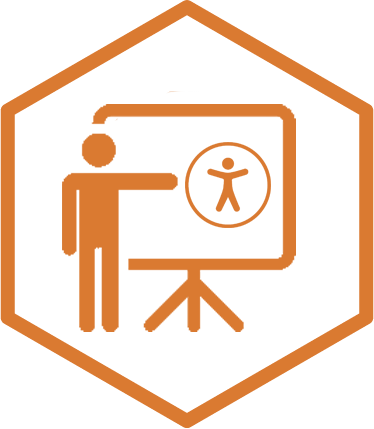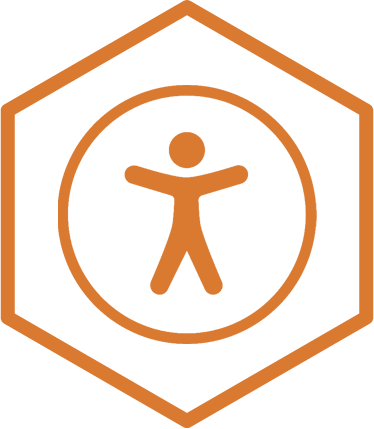Our Digital Engagement Manager works in a role that is primarily focused around producing communication and engagement activity across HeX’s digital channels. Today, Cheryl shares why Digital Accessibility Matters to her and what needs to change with online content to become inclusive.
What does good digital accessibility mean to you personally?

I don’t have a disability myself. Although, over the years, my eyesight has rapidly decreased; leading me to either relying on glasses or being able to zoom into a website or document in order to read its content. Sadly, many platforms still aren’t responsive when enlarged, resulting in text overlapping or items disappearing behind other objects, which simply isn’t good enough in this day and age. This is why digital accessibility is crucial and should be a standard online. Something as simple as someone forgetting to take their glasses with them to work, can result in them relying on a platform to be accessible. So, for millions of disabled people who use assistive technology to access a website, digital accessibility is paramount.
In a work capacity, digital accessibility means a lot. My entire role is about raising awareness on the barriers that people face each day online. In fact, this year’s Digital Accessibility Matters campaign, which this blog is for, is my work; from creating the assets, to engaging on social media and linking in with the passionate influencers who have done such an incredible job in bringing a deeper understanding about the need for online inclusion.
Fundamentally, good digital accessibility creates a world that is free from online obstacles. Everyone has the right to access, interact with, and enjoy their time online. As we all have a part to play in creating an accessible digital space, accessibility should matter to everyone and be a priority.
What are the common barriers to digital accessibility that you discover in your role?

Communication providers have an incredibly important responsibility to create and provide inclusive digital media. The way that we write, structure, and present online content can be the difference between someone being able to understand, access, and engage with an organisation’s services or them being shut out from that information.
I would say that the top 10 things that communications, marketing, graphic design or social media experts would need to start implementing is:
- Writing descriptive alt text for all imagery
- Checking your colour contrast ratios are sufficient
- Creating inclusive media content, such as adding captions and transcripts
- Learning about inclusive typography
- Using heading levels on web pages and documents
- Writing in a user-friendly way with inclusive language
- Creating clear and consistent layouts
- Providing context for users, such as writing descriptive links
- Learning how to create accessible documents
- Writing accessible social media posts, taking into consideration items such as the use of emojis and hashtags.
What should people do if they come across an inaccessible platform?

It’s important for people to challenge organisations that aren’t accessible and report it.
Some businesses may not even be aware that they are presenting accessibility issues and the best way for them to understand where they are going wrong is from the perspective of the user.
If you had the chance to make one point to an organisation surrounding digital accessibility what would it be and why?

Being in a comms role, I’m someone who has understood the need for adding captions on my videos and, as I love design, I’ve always tried to clearly structure my work. This being said, until working at HeX there were many elements I was oblivious to that needed implementing. It’s been a real learning curve to change my writing style and take into consideration just how many inclusive adaptations are needed to even create one simple blog or post.
It bothers me about the lack of education I’ve had over the years at school or throughout my career when it comes to digital accessibility. Luckily, now it comes as second nature. So, my point to any organisation would be to get your team training. Even if they know the basics, there is so much more to learn. Let’s face it, things change fast with technology. In return, your communication output will gain a greater reach and your content will be more user-friendly for everyone to interact with. Win win.
Have you noticed a change in recent times with accessibility and what are your hopes for the future with inclusion?

Though there is still a long way to go, I do think there has been progress over the years with digital accessibility.
The fact that the public sector legislation came into play was a huge win for digital accessibility. Although, it would be so great to see more organisations checking that their websites are accessible and gaining vital user feedback from people with disabilities.
Also, seeing digital accessibility discussed more in headlines is progress. Don’t get me wrong, it’s often because someone is misusing something, like our Prime Minister abusing the alt text feature. However, the fact it’s getting talked about and that it is now a scandal when it happens, shows that people are starting to realise the real need for inclusion online and it all helps in raising that much needed awareness.
My hopes for the future with inclusion is that it becomes the standard. To make this happen, I’d like to see it being taught in education during IT lessons and through further education with web development, communications and in graphic design. Let’s face it, it would be a much more useful skill than a lot of bits we were taught over the years, which we’ve probably never used since.
